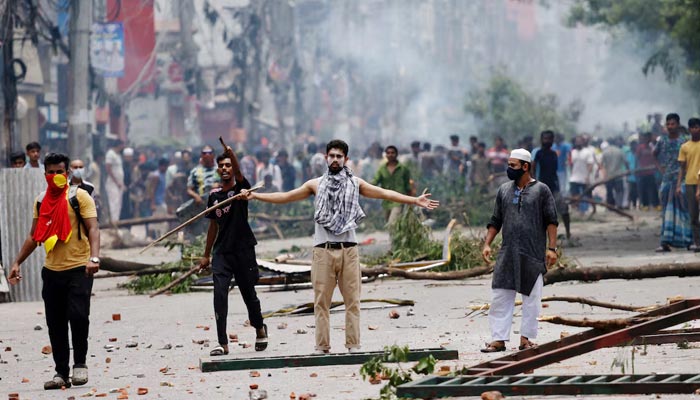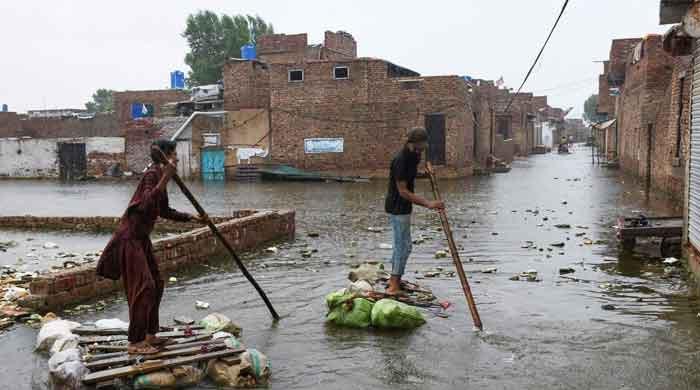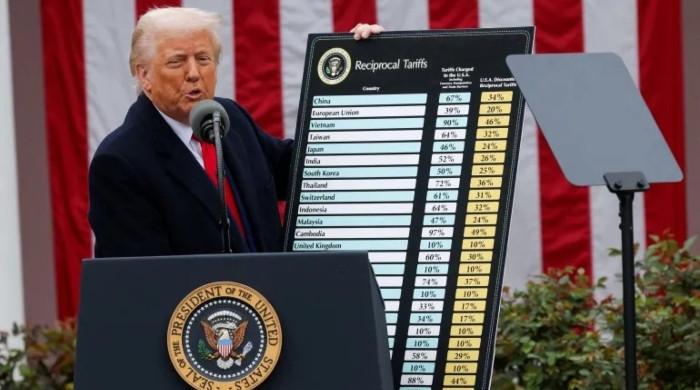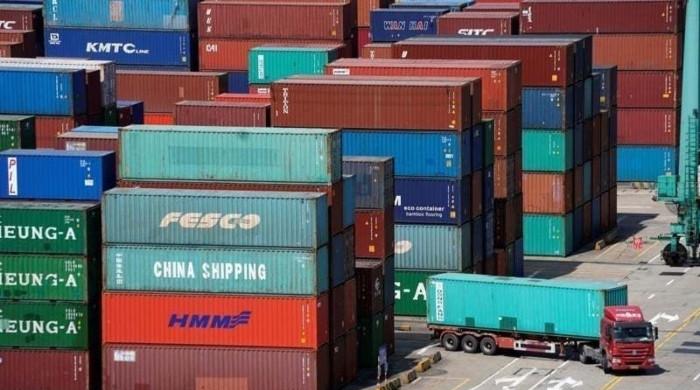The rising tide of students
Bangladesh has a long history of mass movements challenging incumbent governments
August 13, 2024

A student-led mass movement has shaken Bangladesh, leading to the ouster of the country’s iron lady, former prime minister Sheikh Hasina. Young people and students have once again shown their power. Now an interim government has been installed to run the country.
Bangladesh has a long history of mass movements challenging incumbent governments. Bangladesh was in the grip of violence and chaos for days. Businesses and garment factories remained closed, causing huge economic losses. The clashes between the police and student protestors continued for weeks.
Hasina refused to accept the protesters’ demands and tried to quell the movement with brutal state force. More than 300 protesters were killed and many were injured during the protest. The police also arrested more than 10,000 students and political activists. Hasina did whatever was possible for her to crush the protests but failed. Despite the state’s brutal repression and killings, the movement gained momentum and led to Hasina’s ouster.
The former Bangladeshi PM ruled with an iron fist for 15 years till the week-long protests forced her to flee on August 5 to India. She is currently there and looking for a safe country to find asylum in. It is rather surprising to see how a protest movement ended the 15-year-long rule of the Awami League leader.
Hasina can only blame herself for her downfall. She made fatal mistakes while dealing with student protests. She failed to fully grasp the situation and made one mistake after the other, also losing the opportunity to reconcile with angry protesters when she refused to apologise for the killings of students.
The protests were temporarily paused after the Bangladeshi Supreme Court ruled on the quota system. Protesters then put forward demands like a public apology from Hasina for the violence, restoration of internet services, reopening of college and university campuses, and release of those arrested. There was no demand for her resignation at that stage. But when she refused to accept these demands, the protesters returned to the streets, now demanding her resignation.
Instead of passionately engaging with protesting students, she resorted to repressive measures. She relied on the police and the army to deal with the students. She also underestimated the anger and discontent that existed across the country due to her policies.
She was also confident that since the economy was growing at a high rate, her tenure was not in danger. Undoubtedly, the economy continued to grow at a fast pace during her rule. While the capitalist class was happy because it enormously benefited from this high economic growth, many sections of Bangladeshi society were left out. In the last two years, inflation in Bangladesh has reached high levels, and many people are experiencing a cost-of-living crisis. Energy prices in the country have increased at least three times, and youth unemployment is also high.
Despite having a high growth rate of nearly 6% since 2005, the neoliberal economic model has increased inequality in the country, leading to a sharp divide between the rich and the poor.
The rich in Bangladesh amass huge wealth at the cost of the working class and the youth. Economic growth in the country has been mainly focused on the garment sector, and other sectors have not been performing well. The garment industry produces low-paying jobs. Educated young people in Bangladesh are not interested in joining the private sector due to lower wages and the casual nature of jobs.
These are the reasons that led to the mass movement against the government. Young people have not been satisfied with their economic situation and the lack of decent job opportunities. So, naturally, high levels of frustration had been brewing among university and college students who protested strongly against government policies.
When a Bangladeshi high court restored the 56% quota for the families of freedom fighters, minorities and women in public-sector jobs, especially in the civil services, students and young people lost their patience and took to the streets. Even though the Supreme Court overturned the high court decision and fixed the quota at 6%, it failed to pacify the protesters.
Amid all this, Hasina failed to understand that high economic growth is not improving the lives of millions of people. In the country of 170 million, 32 million young people are unemployed. So, it is understandable why the students protested the restoration of the quota system.
Hasina almost converted Bangladesh into a one-party state. She was not ready to provide an opportunity to the people to express their anger and discontent through democratic means like elections and peaceful protests. She tried everything to crush the opposition and adopted a zero-tolerance policy towards dissent and opposition.
She won another term in farce elections held in January this year, which were boycotted by opposition parties. It was clear from the intensity of the protests that people were just looking for an opportunity to express themselves. The high court ruling on the quota system triggered a movement that was waiting to erupt. As soon as the Bangladesh army withdrew its support, the Hasina-led government collapsed.
The interim government is led by Nobel laureate Dr Muhammad Yunus. It is not clear how long this interim government will be in place. According to the Bangladesh constitution, an interim government can run the country for up to six months. This interim government comprises academics, former military and civil officers and leaders of the student movement.
Dr Yunus was forced to leave the country by the Hasina-led government and had been living in France before his return to the country. His appointment as the head of the interim government is a significant development. The situation has taken a dramatic turn. He was in exile when Hasina was in the government, and now that he is in power, Hasina has fled to India.
The student-led political revolution has indeed driven a prime minister out, but the social and economic situation will not improve without a change in economic policies and pro-people radical reforms. Students and young people have paid a heavy price for this revolution, and this revolution is not finished yet.
The writer is a freelance journalist
Originally published in The News











